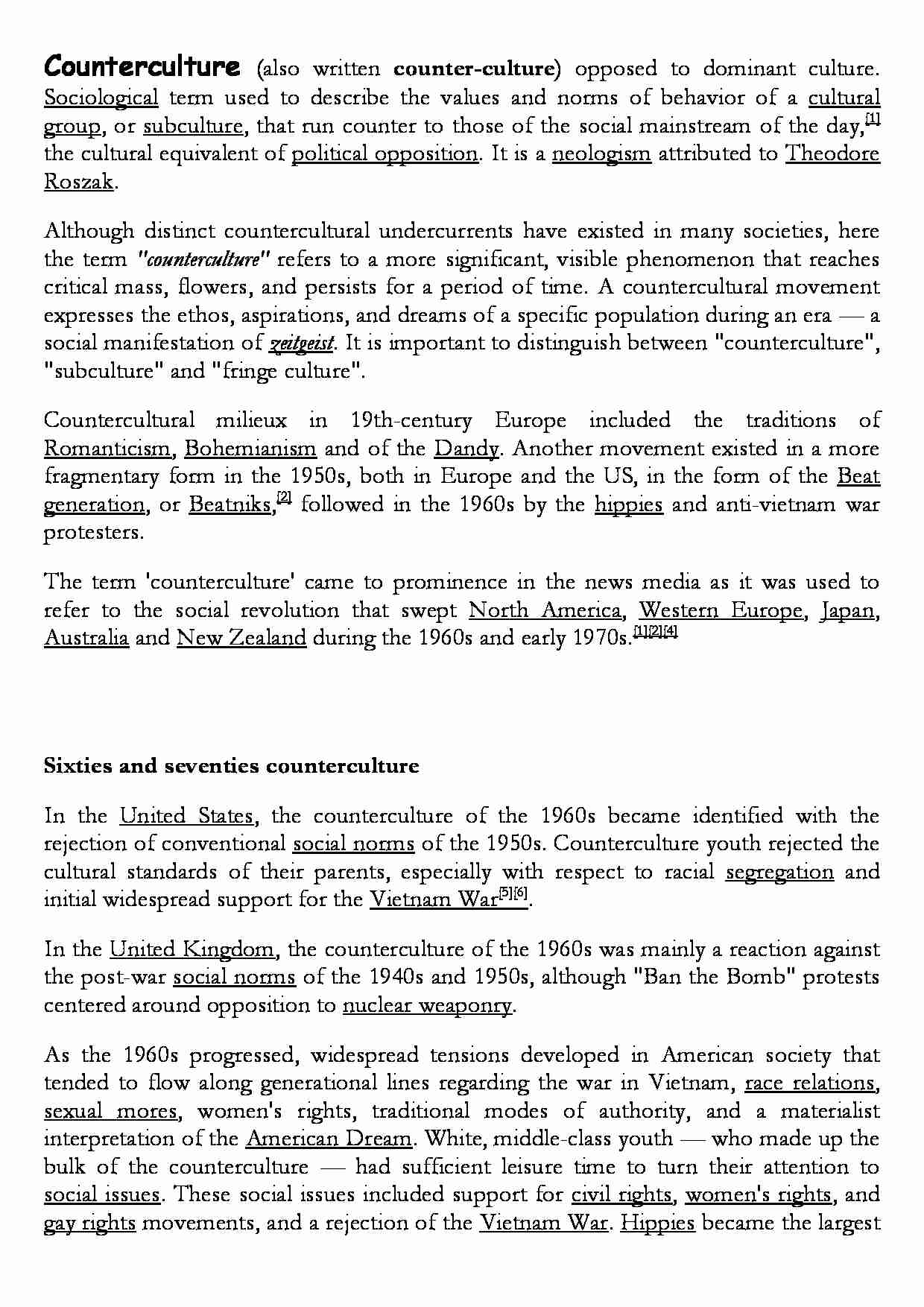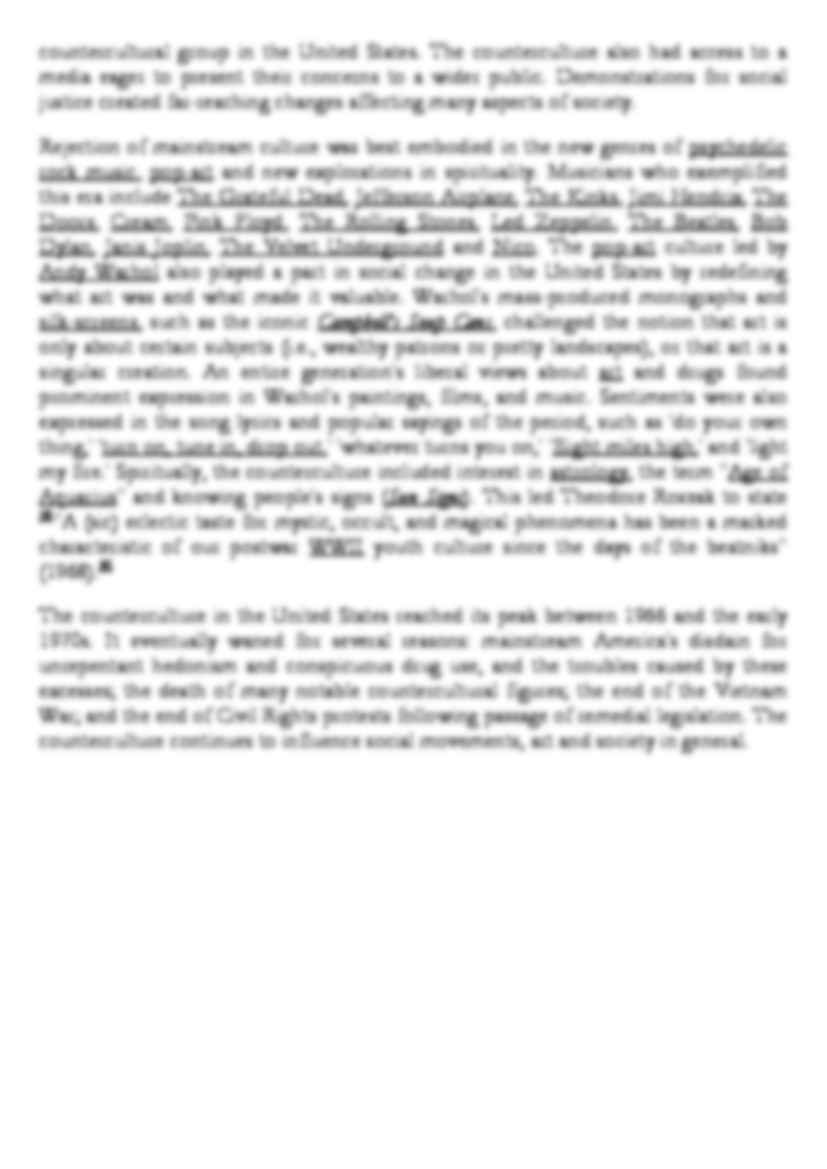Counterculture (also written counter-culture) opposed to dominant culture. Sociological term used to describe the values and norms of behavior of a cultural group, or subculture, that run counter to those of the social mainstream of the day,[1] the cultural equivalent of political opposition. It is a neologism attributed to Theodore Roszak. Although distinct countercultural undercurrents have existed in many societies, here the term "counterculture" refers to a more significant, visible phenomenon that reaches critical mass, flowers, and persists for a period of time. A countercultural movement expresses the ethos, aspirations, and dreams of a specific population during an era — a social manifestation of zeitgeist. It is important to distinguish between "counterculture", "subculture" and "fringe culture".
Countercultural milieux in 19th-century Europe included the traditions of Romanticism, Bohemianism and of the Dandy. Another movement existed in a more fragmentary form in the 1950s, both in Europe and the US, in the form of the Beat generation, or Beatniks,[2] followed in the 1960s by the hippies and anti-vietnam war protesters.
The term 'counterculture' came to prominence in the news media as it was used to refer to the social revolution that swept North America, Western Europe, Japan, Australia and New Zealand during the 1960s and early 1970s.[1][2][4]
Sixties and seventies counterculture
In the United States, the counterculture of the 1960s became identified with the rejection of conventional social norms of the 1950s. Counterculture youth rejected the cultural standards of their parents, especially with respect to racial segregation and initial widespread support for the Vietnam War[5][6].
In the United Kingdom, the counterculture of the 1960s was mainly a reaction against the post-war social norms of the 1940s and 1950s, although "Ban the Bomb" protests centered around opposition to nuclear weaponry.
As the 1960s progressed, widespread tensions developed in American society that tended to flow along generational lines regarding the war in Vietnam, race relations, sexual mores, women's rights, traditional modes of authority, and a materialist interpretation of the American Dream. White, middle-class youth — who made up the bulk of the counterculture — had sufficient leisure time to turn their attention to social issues. These social issues included support for civil rights, women's rights, and gay rights movements, and a rejection of the Vietnam War. Hippies became the largest countercultural group in the United States. The counterculture also had access to a media eager to present their concerns to a wider public. Demonstrations for social justice created far-reaching changes affecting many aspects of society.
Rejection of mainstream culture was best embodied in the new genres of psychedelic rock music, pop-art
(…)
… the new genres of psychedelic rock music, pop-art and new explorations in spirituality. Musicians who exemplified this era include The Grateful Dead, Jefferson Airplane, The Kinks, Jimi Hendrix, The Doors, Cream, Pink Floyd, The Rolling Stones, Led Zeppelin, The Beatles, Bob Dylan, Janis Joplin, The Velvet Underground and Nico. The pop-art culture led by Andy Warhol also played a part in social…
... zobacz całą notatkę




Komentarze użytkowników (0)